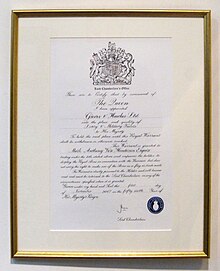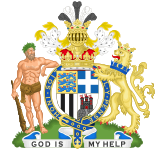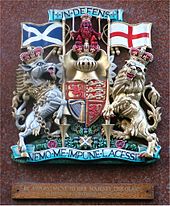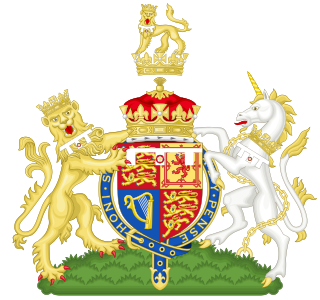
Duke of Edinburgh, named after the city of Edinburgh in Scotland, is a substantive title that has been created four times since 1726 for members of the British royal family. It does not include any territorial landholdings and does not produce any revenue for the title-holder.

The coat of arms of the United Kingdom are the arms of dominion of the British monarch. They are both the personal arms of the monarch, currently King Charles III, and the arms of the state. In addition to the monarch, the arms are used by state institutions including the Government of the United Kingdom, the Parliament of the United Kingdom, and the British judiciary. Differenced versions of the arms are used by members of the British royal family. The monarch's official flag, the Royal Standard, is the coat of arms in flag form.
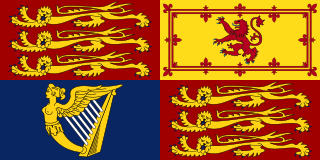
The royal standards of the United Kingdom presently refer to either of two similar flags used by King Charles III in his capacity as sovereign of the United Kingdom, the Crown dependencies, and the British Overseas Territories. Two versions of the flag exist, one for use within Scotland and the other for use elsewhere.

The Worshipful Company of Drapers is one of the 111 livery companies of the City of London. It has the formal name The Master and Wardens and Brethren and Sisters of the Guild or Fraternity of the Blessed Mary the Virgin of the Mystery of Drapers of the City of London. More usually known simply as the Drapers' Company, it is one of the historic Great Twelve Livery Companies and was founded during the Middle Ages.

The College of Arms, or Heralds' College, is a royal corporation consisting of professional officers of arms, with jurisdiction over England, Wales, Northern Ireland and some Commonwealth realms. The heralds are appointed by the British Sovereign and are delegated authority to act on behalf of the Crown in all matters of heraldry, the granting of new coats of arms, genealogical research and the recording of pedigrees. The College is also the official body responsible for matters relating to the flying of flags on land, and it maintains the official registers of flags and other national symbols. Though a part of the Royal Household of the United Kingdom, the College is self-financed, unsupported by any public funds.
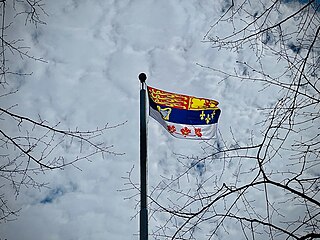
The royal standards of Canada are a set of personal flags used by members of the Canadian royal family to denote the presence of the bearer within any vehicle, building, or area within Canada or when representing Canada abroad. All are based on a banner of the coat of arms of Canada, which are the arms of the Canadian monarch.

A garrison sergeant major (GSM) in the British Army is the senior warrant officer of a garrison and holds the rank of warrant officer class 1. The GSM London District, always a guardsman, holds one of the four most senior WO1 appointments in the British Army, and has military ceremonial responsibility for important state occasions such as Trooping the Colour.
Royal warrants of appointment have been issued for centuries to tradespeople who supply goods or services to a royal court or certain royal personages. The royal warrant enables the supplier to advertise the fact that they supply to the issuer of the royal warrant; thus lending prestige to the supplier. Royal families of the United Kingdom, the Netherlands, Belgium, Luxembourg, Monaco, Denmark, Sweden, and Japan among others, allow tradesmen to advertise royal patronage.
A royal warrant is a document issued by a monarch which confers rights or privileges on the recipient, or has the effect of law.
Gieves & Hawkes is a bespoke men's tailor and menswear retailer located at 1 Savile Row in London, England. The business was founded in 1771. It was acquired in 2012 by the Hong Kong conglomerate Trinity Ltd., which was in turn purchased by Shandong Ruyi in 2017. After Trinity was subject to a winding-up petition for debt in September 2021, Gieves & Hawkes was acquired in November 2022 by Frasers Group, owner of Sports Direct.

By the arrangements of the Canadian federation, the Canadian monarchy operates in Saskatchewan as the core of the province's Westminster-style parliamentary democracy. As such, the Crown within Saskatchewan's jurisdiction is referred to as the Crown in right of Saskatchewan, His Majesty in right of Saskatchewan, or His Majesty the King in right of Saskatchewan. The Constitution Act, 1867, however, leaves many royal duties in Saskatchewan specifically assigned to the sovereign's viceroy, the Lieutenant Governor of Saskatchewan, whose direct participation in governance is limited by the conventional stipulations of constitutional monarchy.

By the arrangements of the Canadian federation, Canada's monarchy operates in British Columbia as the core of the province's Westminster-style parliamentary democracy. As such, the Crown within British Columbia's jurisdiction is referred to as the Crown in Right of British Columbia, His Majesty in Right of British Columbia, or the King in Right of British Columbia. The Constitution Act, 1867, however, leaves many royal duties in British Columbia specifically assigned to the sovereign's viceroy, the Lieutenant Governor of British Columbia, whose direct participation in governance is limited by the conventional stipulations of constitutional monarchy.

Royal warrants of appointment in Thailand have been issued for decades initially to those who supplied goods or services to the King of Thailand, but have evolved to include companies and businesses that have shown exceptional services and commitment to the economic and social development of the nation. The warrant enables the company to advertise the royal approval of distinction with the display of the royal Garuda, thus lending prestige to the company.
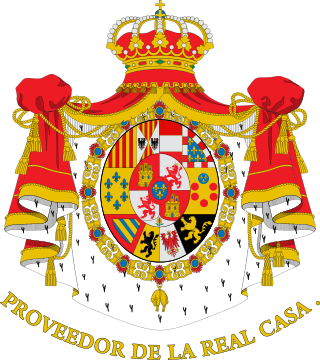
Royal warrants of appointment have been issued for centuries to those who supplied goods or services to the King of Spain. The warrant enables the company to advertise the royal approval of distinction with the display of the royal coat of arms, thus lending prestige to the company.
Barnard & Westwood is a British printing and bookbinding company. Its primary business is the production of bespoke stationery products for both individuals and businesses, based on traditional techniques and tools. Based in London, the company holds royal warrants of appointment granted by Queen Elizabeth II (1986) and the Prince of Wales (2012), and is a regular supplier of products and services to the British Royal Family.
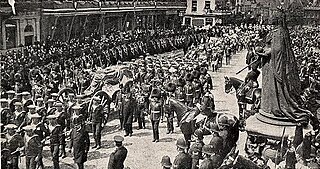
The funeral directors to the Royal Household of the Sovereign of the United Kingdom are selected and appointed by the Lord Chamberlain's Office.

An Imperial and Royal Warrant of Appointment during the Austro-Hungarian Empire was issued to vendors who supplied goods or services to the Austrian imperial court in Vienna and/or the Hungarian royal court in Budapest. The warrant was normally an official document, which enabled the supplier to advertise the fact and thus lend itself prestige.

The coat of arms of the Prince of Wales is the official personal heraldic insignia of the Princes of Wales, a title traditionally granted to the heir apparent of the reigning monarch of the United Kingdom of Great Britain and Northern Ireland, formerly the Kingdom of Great Britain and before that the Kingdom of England.

Letters patent, in the United Kingdom, are legal instruments generally issued by the monarch granting an office, right, title, or status to a person. Letters patent have also been used for the creation of corporations or offices, for granting city status, for granting coat of arms, and for granting royal assent.
